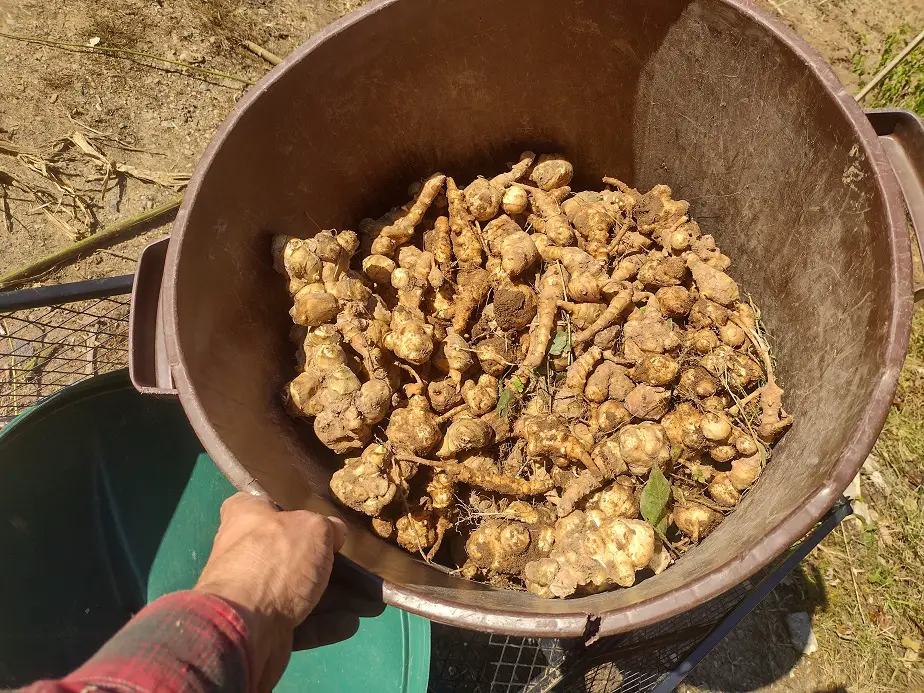Self-sufficiency is the key to stability, reliability, and wethering the trials that come your way.
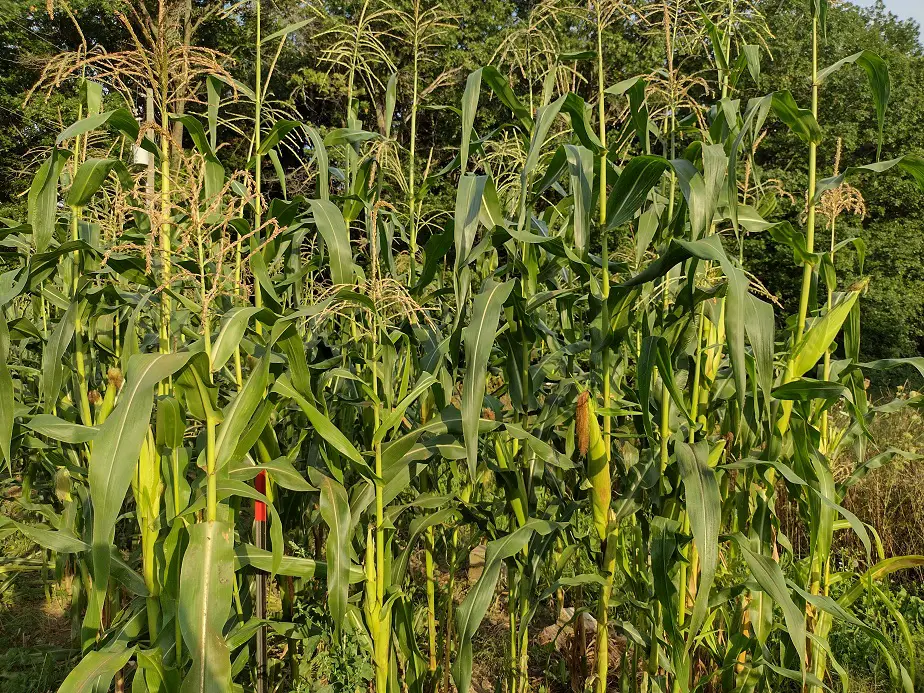
Corn
Corn is a good crop for self-sufficiency. Early Americans grew corn as the number one sustenance crop. Modern corn is the most productive grain by far. Flint corn and dent corn are high-calorie, easily digestible food that grows reliably in decent conditions.
Corn is the easiest grain to plant, manage, and harvest by hand. I have planted stands of corn by poking holes with my finger and dropping in seeds. Being easy to plant by hand, you can keep it in straight rows. That makes it easy to go in and weed the crop without damaging it.
Dry corn easily shells by hand, then can be stored in a fairly compact manner. If the weather is wet and corn isn’t drying, corn can be picked and allowed to finish drying in a house or barn. Corn grows fast and large, so it does use more soil nutrients per season than other grains.
Wheat
Wheat is the most prominent sustenance crop throughout Europe and the middle east. It’s not as productive as corn can be, but it’s considered more reliable and more drought tolerant. Wheat definitely stores well, but it requires a more lengthy process to harvest.
Being at best, half as productive as corn, wheat needs less fertility to grow well, which is big reason it’s been so popular in many poorer and heavily farmed places. Wheat is a shorter-season crop, growing and maturing before most other grains. It’s more sensitive to hail and harsh storms than corn is.
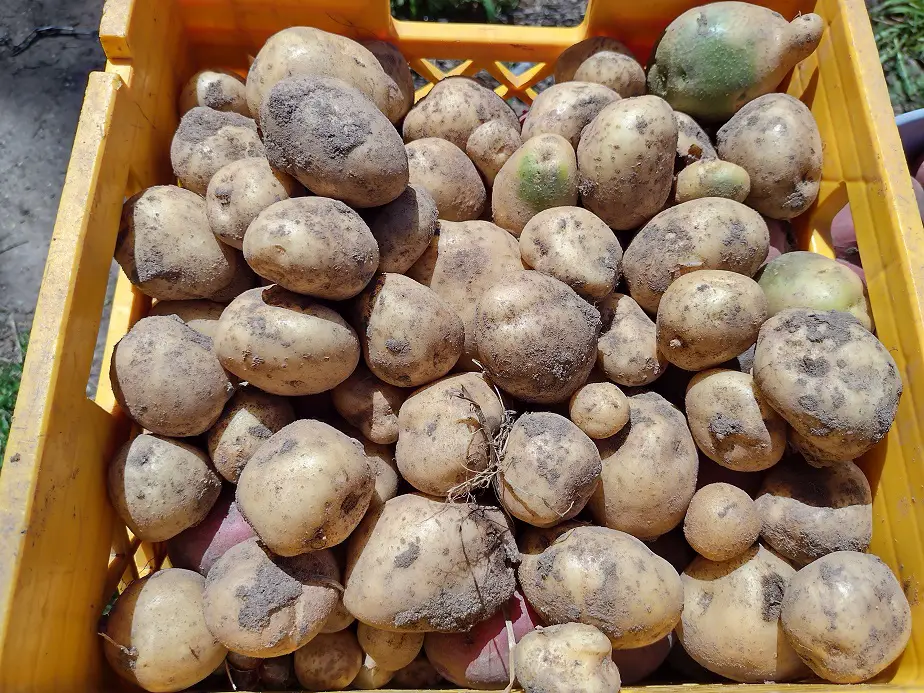
Potato
Potato has been a sustenance crop in North America since the 1700s, in Europe since the 1600s, and in South America for millennia. Potato is highly productive in terms of calories per acre. It’s a reliable crop in cool weather areas. I love growing potatoes.
The problem with potato is that they take forever to grow from seed, so they’re usually grown from other potatoes. That means if you want to save your own to plant again, you pretty much have to store a pile of potatoes without them going bad. That’s not super easy.
Sunflower
sunflower is cold hardy, drought tolerant, and consistent. It’s moderately productive and yields seeds very high in protein and oil. Sunflower seeds are equal in protein to soybean, but much better for you. I grow a lot of sunflower. It’s one of the first seeds that come up in the spring, and withstands frosts well.
Sunflower is easy to harvest by hand, and whole, dry seed heads can be stored for animal feed. We grow it primarily for our pigs and chickens, to add protein to their diet. Sunflower is the most reliable high-protein crop.
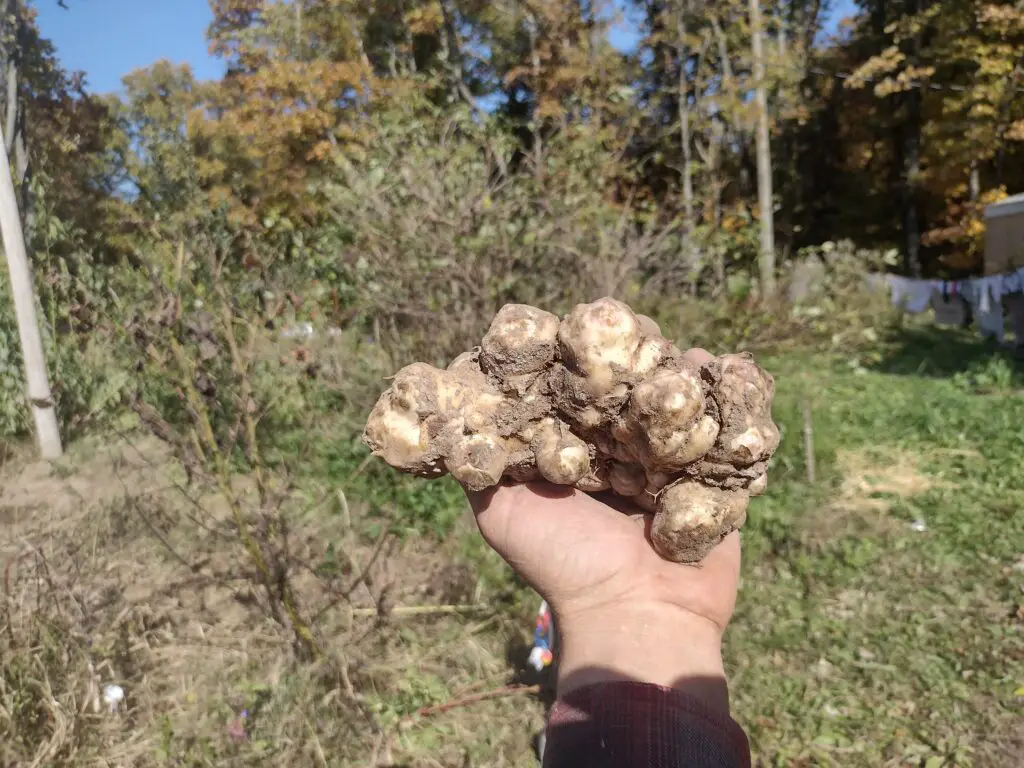
Sunchoke/sunroot
Sunchokes are a type of sunflower that grows small flowers, large stalks, and starchy, tender tubers. They are grown for their tubers as food or livestock feed. In my experience, sunchokes are the most productive food crop. They grow more calories per acre than anything else I’ve ever grown.
I averaged 11 pounds per plant, and got closer to 17 pounds when planted in compost. They have the same calories as potatoes, but more protein and vitamins. But, they can cause some gas, especially if not thoroughly cooked. We grow sunchokes for pig feed and we eat them regularly ourselves. Sunchokes overwinter up to USDA zone 4.
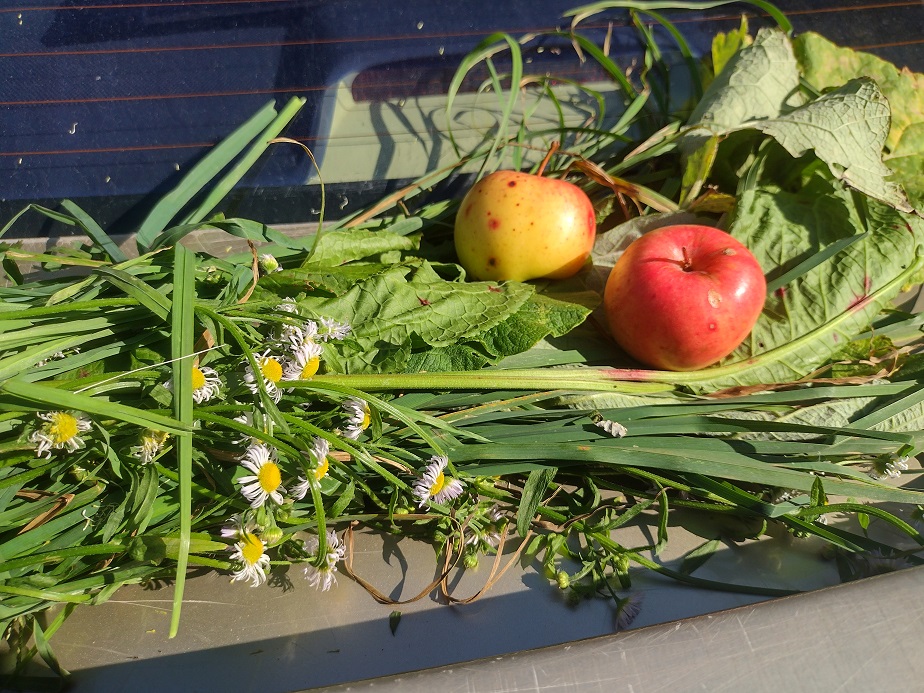
Apples
Apples are a reliable food crop that’s high in calories and very productive most years. when eaten seeds and all, they offer good nutrition and a lot of food. Damaged or buggy apples are an older, traditional fattening method for pigs, and they tend to store well. There’s a reason every old farm had a few apple trees.
Apples can bring in more calories per acre than anything except some of the tropical fruit trees. Besides the food value, Apples are used for making cider, which can turn to alcohol or vinegar, both are quite useful as cleaning or disinfecting agents. A late frost will kill apple blossoms, resulting in little fruit.
Crabapples
Crabapples are simply a more wild apple. They are less sweet, firmer, and more hardy than modern apples. They are a superb animal feed and stay on the tree for a long time. Crabapples are more frost-resistant and drought resistant than modern apples.
They are also more bug-resistant. Not sure why, it probably has to do with being less sweet. Crabapples are a good source of starch for you or for animals. for a survival crop, they’re awesome. And, they don’t taste bad.
Chestnut
Chestnut is a reliable, heavily productive tree that produces high-oil, high-protein food. Most chestnuts today are either the Chinese Chestnut or are a hybrid because a disease that wiped out most of the American chestnuts years ago. Both options are great.
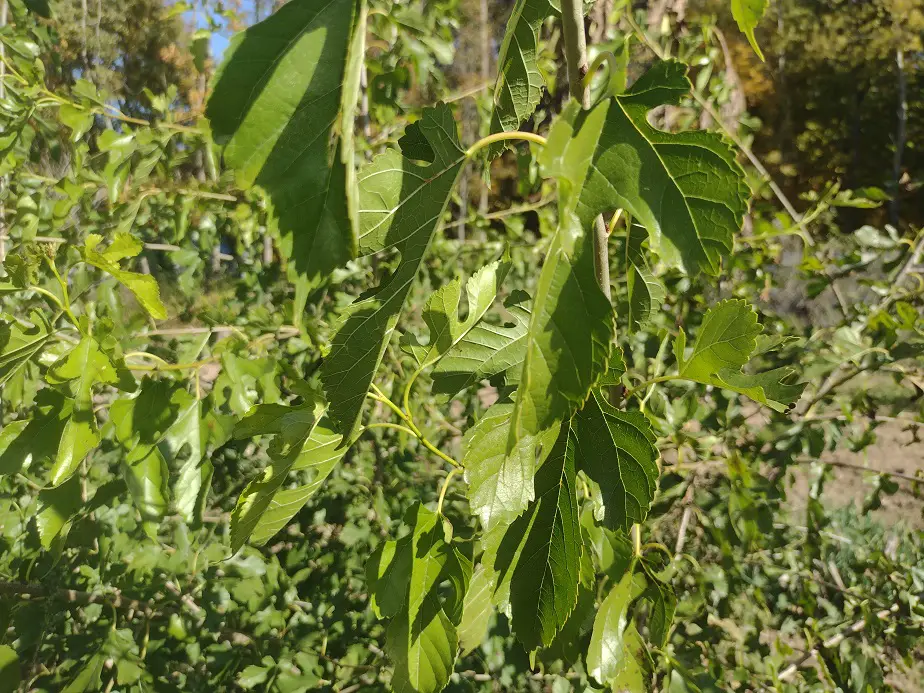
Mulberry
Mulberry is a super productive tree that doesn’t get hit by frosts. The fruits are very sugary and delicious. It’s probably the most reliable fruit tree in the wild. Mulberry fruits drop to the ground when overripe, so they are great in and around livestock pastures. They have tender fruits but oh’so good.
Mulberry trees grow vigorously and produce well, even in poor soil and on dry years. And, they can grow huge! I planted several mulberry in my yard. It really should be more common. They are awesome.
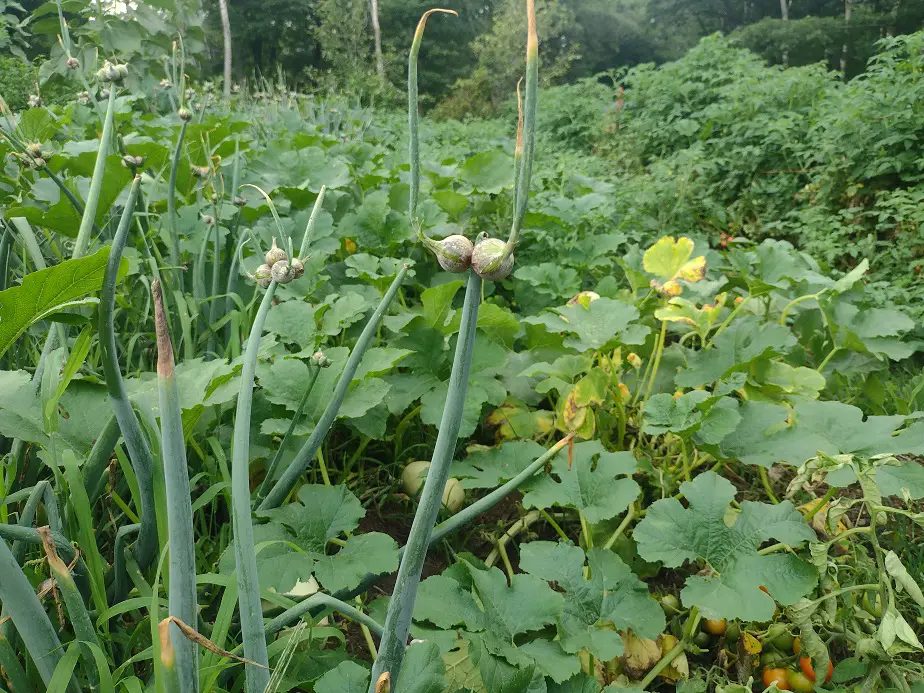
Egyptian Walking Onion
Sometimes called winter onion, this is a perennial multiplying onion. It’s super cold-hardy and overwinters up to zone 4, sometimes zone 3. In the summer, it grows mini onion bulblets at the top instead of flowers. In the fall, the bulb cloves into 2 or 3 new main plants. They are stout onions.
In the spring and early summer, they are harvested as shallots, and in the later summer, they make small but good traditional onions. If you pick only the green onion, the bulbs will remain, grow, and multiply every year. They don’t grow big onions, but are drought, freeze, and pest-resistant, and hard to hurt.
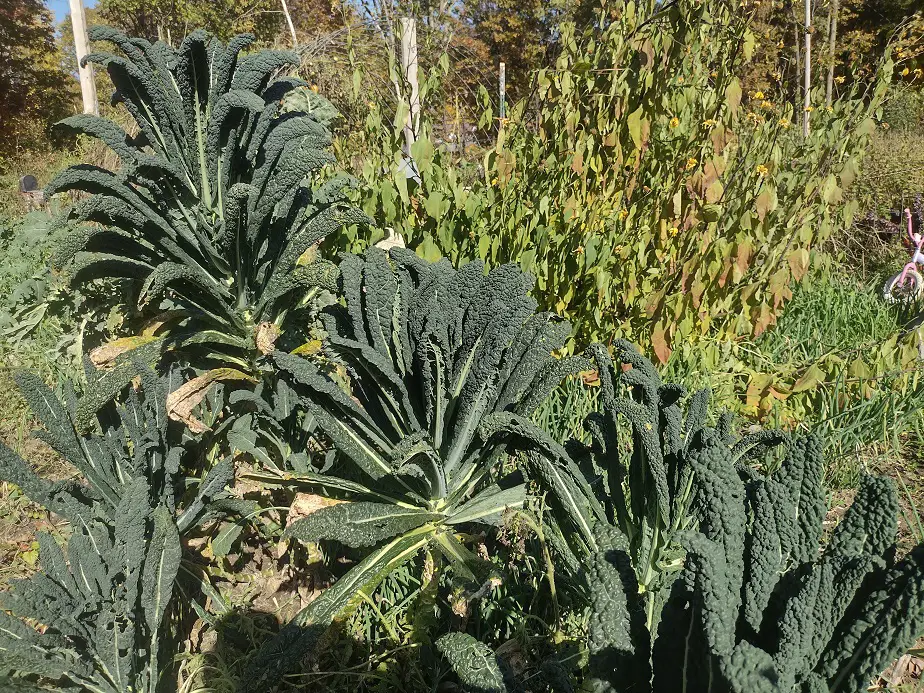
Kale
Kale is the most productive green. It’s also very nutritious. Kale is heat and cold tolerant, and often overwinters. Kale can be planted in early spring and leaves picked when they are 8 inches or larger. You can harvest the leaves up until, and sometimes through winter.
Kale can be harvested heavily but will need more water and fertilizer if you pick it a lot. If you can get it to fully overwinter, you can collect seeds the second year. Kale is a lot like a stronger-tasting cabbage leaf. it has more
Mangel Beet
Mangel beet is an old, traditional fodder crop for livestock, and is good for your table. They are just a large beet. Most are red in color, but there are some yellow/orange ones to. The most common one grown for feed is Mammoth Red Mangel. It’s very productive in most areas, and is a moderately starchy vegetable.
Mangel is a superb feed crop for grazing animals, including horses, cows, goats, and rabbits. They have a lot of leafy growth and That’s also great for either cooking and eating, or feeding top animals. The beet root is low in protein, but the leaves are about 20 percent protein.
Sugar Beet
Sugar beet is a slightly newer version bred out of the mangel beets. They are higher calorie and contain up to 20 percent sugar. Sugar beets are often 5 to 10 pounds, not including the leaves. Mangels can be more productive, but sugar beet grows more overall energy per square foot of space.
Sugar beet is pretty much a complete diet for dairy cows, milking goats, and growing rabbits. The sugar content makes it a desirable feed option. They are also good for cooking. Even large sugarbeets are tender when sliced thinly and they go well in a soup. Beets in general have very little pest problems.

Turnips
Turnips are a fast-growing crop for food an animal feed, but they have little to no starch. As a feed crop, turnips are especially good fo sheep and cattle. They are usually fed leaf and all. Turnip can be planted after a main crop harvest and will produce a harvest in 50-60 days.
I harvested onions and potatoes in September, planted turnips there, and harvested them in November. Turnips are cold hardy, frost tolerant, and somewhat freeze-tolerant. They can be grown early or late in the season. They are good for grazing animals but offer little energy to pigs and chickens, or us.
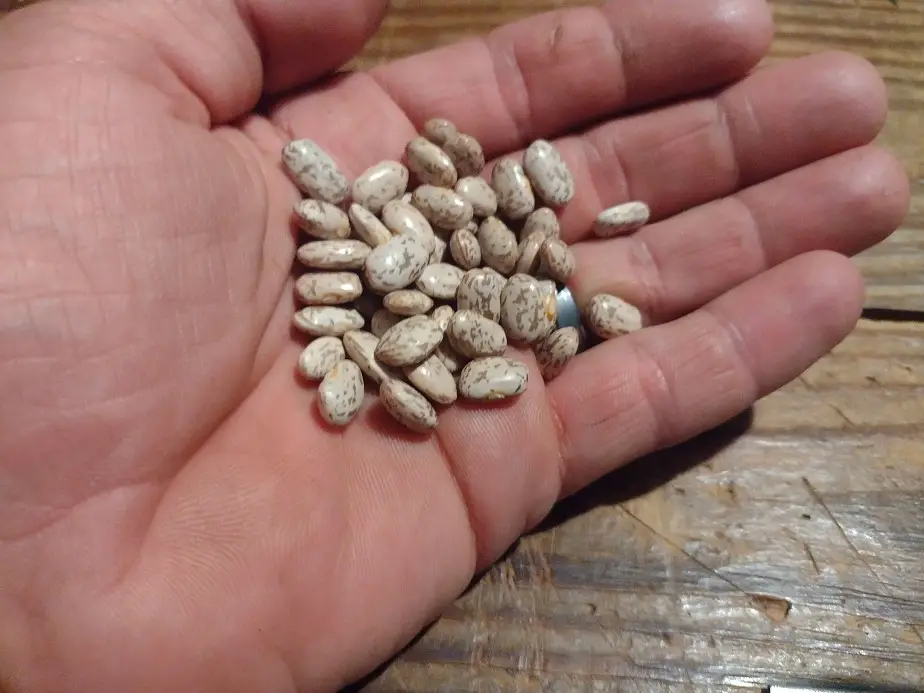
Beans
Beans, when dry and shelled, are a concentrated source of complete protein. Shelled beans are about 40 percent protein, and have a good bit of starch and oil in them too. Beans are one of the only things you can grow that have all the proteins you and I need. That’s the same type of protein that pigs and chickens need.
Basically, it’s beans, peas, and sunflower seed that have all the proteins at high enough concentrations to be considered a full-spectrum protein source. Other than those, you’ll need meat, dairy, or eggs. Any green bean will work, just let them mature on the plant and dry naturally as the plant dies.
Shelled beans are not particularly productive, but may be essential. A good stand od beans will produce about as much protein as sunflower seed, and both will usually yield a larger harvest with more protein than a dry, shelled pea.
Time to Round up
All these things are easy to plant, easy to grow, and easy to harvest by hand. They are the more productive and useful options, and are all things that either I have grown or have considered growing at Cairnstone Farm. I am confident that from these, you will find some good options that will do well for you in your area.
Related Articles:

